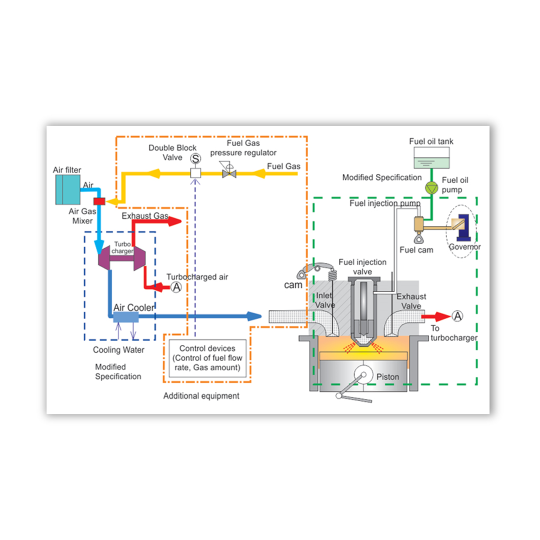#reducedemission
Explore tagged Tumblr posts
Text
Construction Lubricants Market - Forecast(2024 - 2030)
Construction Lubricants Market Overview
The Construction Lubricants Market size is estimated to reach US$12.5 billion by 2030, after growing at a CAGR of 3.8% over the forecast period 2024–2030. Construction lubricants are used to reduce friction between moving parts or surfaces and to improve the efficiency of construction machines and it includes hydraulic fluid, automatic transmission fluid, compressor oil, grease and engine oil. Lubricants are used to reduce friction in construction equipment such as bulldozers, dump trucks, draglines, scrapers and shovels and other heavy machinery.

The global expansion of the construction sector is one of the primary reasons driving the growth of the construction lubricants market. The rising need for high-quality lubricants in a variety of construction activities, as well as the growing popularity of synthetic oil-based lubricants due to advantageous qualities such as water solubility, are driving the market growth. The covid-19 pandemic majorly impacted the construction lubricants market due to restricted production, supply chain disruption, logistics restrictions and a fall in demand. However, with robust growth and flourishing applications across major construction industries the construction lubricants industry is anticipated to grow rapidly over the forecast period.
Sample Report:
Market Snapshot
Construction Lubricants Market Report Coverage
The “Construction Lubricants Market Report — Forecast (2024–2030)” by IndustryARC, covers an in-depth analysis of the following segments in the construction lubricants industry. By Base Oil — Mineral Oil, Synthetic Oil and Bio-Based Oil. By Type — Hydraulic Oil, Engine Oil, Gear Oil, Automatic Transmission Fluid, Compressor Oil, Grease and Others. By Equipment — Earthmoving Equipment, Material Handling Equipment, Electrical & Electronics, Heavy Construction Vehicles and Others. By Application — Commercial and Residential. By Geography — North America (the USA, Canada and Mexico), Europe (UK, Germany, France, Italy, Netherlands, Spain, Belgium and the Rest of Europe), Asia-Pacific (China, Japan, India, South Korea, Australia and New Zealand, Indonesia, Taiwan, Malaysia and Rest of APAC), South America (Brazil, Argentina, Colombia, Chile and Rest of South America), Rest of the World [Middle East (Saudi Arabia, UAE, Israel and Rest of the Middle East) and Africa (South Africa, Nigeria and Rest of Africa)].
Key Takeaways
The Asia-Pacific region dominates the construction lubricants market size, owing to the region’s high economic growth rate and high investment in the construction industry.
The expanding construction activities, as well as the upgrading of heavy machinery, are the primary driving factors influencing the construction lubricants market.
However, technological developments are limiting market growth by reducing equipment size and lubricant consumption in the construction industry.
For More Details on This Report — Request for Sample
Inquiry Before Buying:
Construction Lubricants Market Segment Analysis — by Base Oil
Synthetic Oil held a significant share in the Construction Lubricants market share in 2023 and is forecasted to grow at a CAGR of 3.3% over the forecast period 2024–2030, owing to the extensive characteristics provided by synthetic oil over other base oil types such as mineral oil and bio-based oil. Synthetic oils are base oils and additives that improve an engine’s overall performance. When compared to traditional mineral oil-based lubricants, synthetic oils offer improved performance, lower maintenance costs and address environmental concerns. As a result of the increased focus on emissions and expanding consumer awareness about the benefits of synthetic oils, there is a large demand for synthetic oils, which is contributing to the revenue growth of the global
construction lubricants market size.
Construction Lubricants Market Segment Analysis — by Application
The Commercial held a significant share in the Construction Lubricants market share in 2023 and is forecasted to grow at a CAGR of 4.1% during the forecast period 2024–2030, owing to the significant use of construction lubricants in the commercial sector. Construction lubricants lower corrosion and friction while increasing the longevity of the machine’s moveable elements. The commercial construction sector is expanding globally owing to a robust economy and solid market fundamentals for commercial real estate, as well as an increase in government initiatives for public works and institutional buildings. For Instance, Argentina has proposed a commercial building proposal of $428 million dollars. As part of the Plan Argentina Hace, the Ministry of Public Works said in January 2022 that it would invest ARS10.6 trillion ($91 billion) to complete 3,131 new infrastructure works and projects around the country. With the rise in commercial activities across the globe, the demand for construction lubricants is anticipated to rise for various applications, which is projected to boost the market growth in the commercial industry during the forecast period.
Schedule a Call:
Construction Lubricants Market Segment Analysis — by Geography
The Asia-Pacific region held the largest share in the Construction Lubricants market share in 2023. The fuelling demand and growth of construction lubricants in this region are influenced by flourishing demand from construction industries, along with fuelling construction activities across APAC. The building and construction sector is growing rapidly in Asia-Pacific owing to a major development in infrastructural projects, emphasis on affordable housing units and modular building technology. According to the Department for Promotion of Industry and Internal Trade (DPIIT), In India, Between April 2000 and September 2023, foreign direct investment (FDI) in the construction development (townships, housing, built-up infrastructure and construction development projects) and construction (infrastructure) activity sectors totalled US$26.4 billion and US$32 billion, respectively. According to the International Trade Administration, the construction sector in China is projected to grow at an average of 8.6% from the year 2022 to 2030. Furthermore, the Make in India campaign by the Government of India plans to achieve infrastructural investment worth US$965.5 million by the year 2040. With the robust growth of the building and construction industry in Asia-Pacific, the demand for construction lubricants for equipment such as hydraulic fluid, engine oil, grease and others in construction will rise. Thus, with the high growth of construction lubricants in construction applications, it is anticipated that the demand for the construction lubricants industry will flourish during the forecast period.
Construction Lubricants Market Drivers
Government Initiatives Bolstering the Growth of the Commercial Sector:
Construction Lubricants reduce corrosion and frictio n while increasing the longevity of machine moveable parts, which drives the market growth of construction lubricants in the commercial industry. The demand for Construction Lubricants is rapidly growing as government investment in the commercial industry increases. For instance, Kansai International Airport in Japan will spend about 100 billion yen (US $683 million) by 2025 to upgrade the larger terminal, to increase space for international flights at the country’s №2 hub. The Indian Union Budget of February 2023 aims to build 50 additional airports, aerodromes, helipads, and water routes to enhance connectivity. The health facility revitalization component of the national health insurance indirect grant in South Africa has been allocated R4.4 billion (US $23.3 million) over the medium term (2022–2025). These grants are aimed at accelerating the construction, maintenance, upgrading and rehabilitation of new and existing health system infrastructure. Over the medium term, the department aims to construct or revitalise 92 health facilities through the indirect grant and conduct major maintenance work or refurbishment on a further 200 facilities. The Union Budget 2023 also allocated Rs 76,431 crore (US $9.3 billion) to the Ministry of Housing and Urban Development (MoHUA) with the aim of aiding the completion of stalled housing projects. As a result of all these initiatives, the demand for construction lubricants for equipment such as hydraulic fluid, engine oil, grease and others in construction will rise. Thus, with the high growth of construction lubricants in the commercial industry, it is anticipated that the demand for the construction lubricants industry will flourish during the forecast period.
Buy Now:
Bolstering Growth of the Residential Industry:
Construction Lubricants have seen a huge increase in their use in residential areas. The residential industry uses a variety of equipment that require construction lubricants in order to eliminate breakdowns and reduce friction. Additionally, individuals are remodeling their homes in accordance with trends to improve their visual appeal of the same. Due to these comprehensive qualities and Urbanisation, the market for construction lubricants for the residential industry is growing. For instance, the residential construction industry in Canada displayed a notable upswing in august. Statistics Canada reported a 1.6% surge in investment to $11.9 billion, with single-family homes rising by 2.4% to $5.9 billion and multi-unit constructions climbing 0.9% to $6.0 billion. According to Japan’s Ministry of Land, Infrastructure, Transport and Tourism, the construction reported a 5% rise in housing construction within the public sector in 2023. Thus, with the high growth of construction lubricants in the residential industry, it is anticipated that the demand for the construction lubricants industry will flourish during the forecast period.
Construction Lubricants Market Challenge
Fluctuations in Crude Oil Prices
Fluctuations in crude oil prices continue to be one of the main challenges in the construction lubricants market. Construction lubricants are essentially petrochemicals derived from Brent crude oil. Rising crude oil prices cause raw material price volatility, posing substantial hurdles for manufacturers in the construction lubricants market. For instance, the Brent crude oil price increased from US$86.51/bbl in Jan 2022 to US$122.71/bbl in June 2022 and then decreased to US$74.84/bbl in June 2023. This results in a considerable increase in construction lubricant prices, which drives up manufacturing costs and reduces manufacturers’ profit margins, thereby limiting the construction lubricants market growth.
Construction Lubricants Industry Outlook
Technology launches, acquisitions and R&D activities are key strategies adopted by players in the construction lubricants market. The top 10 companies in the Construction Lubricants market are:
Royal Dutch Shell
ExxonMobil
BP p.l.c.
Chevron Corporation
TotalEnergies SE
Petrochina Company
LUKOIL
Indian Oil Corporation
Sinopec
Fuchs Petrolub SE
Recent Developments
In May 2023, BIGBEN’s introduction of ScaffOil represented a significant leap in construction lubricants. This eco-friendly, high-performance product tailored for scaffolding and construction offers weather resilience and superior penetrating power. Its focus on durability and operational efficiency aligns with evolving demands in this sector.
In June 2022, Volvo Construction Equipment launched Volvo Hydraulic Oil 98611 HO103, revolutionizing the construction lubricants market. This oil extends drain intervals in Volvo’s crawler excavators to 3,000 hours, enhancing equipment performance and longevity. Featuring optimized fuel efficiency, reduced oil consumption, and environmental benefits, it offers diverse viscosity options, marking a significant advancement in lubricant technology.
In March 2022, BPCL, launched four new MAK lubrication products. Each product is intended to improve customer performance, dependability and durability
For more Chemicals and Materials Market reports, please click here
#lubrication#efficiency#equipmentlongevity.#syntheticlubricants#performance#sustainability#biodegradablelubricants#ecofriendly#heavyduty#highperformancelubricants#wearandtear#energyefficient#operatingcosts.#predictivemaintenance#iotlubrication#downtime#machinelife.#innovation#environmentalregulations#longlasting#offroadvehicles#constructionmachinery.#advancedlubrication#corrosionprotection#reducedemissions.#greaselubrication#hydraulicfluids#smoothoperation#maximumperformance#extremeconditions.
0 notes
Text

#CNGConversion#CNGKit#NaturalGasConversion#CNGVehicle#EcoFriendly#CleanEnergy#CNGFuel#AlternativeFuel#GreenTransport#CNGTechnology#FuelConversion#SustainableMobility#CNGConversionKit#EnvironmentallyFriendly#CNGConversionService#ReducedEmissions#EnergyEfficiency#CNGConversionCost#CNGConversionBenefits
1 note
·
View note
Text

"Unleash the Power of Renewed Possibilities! 🚀✨ Say hello to our latest refurbished laptop collection, combining top-notch performance with incredible savings. Embrace sustainability while enjoying a seamless computing experience. 💻♻️
#RefurbishedLaptops#RenewedTech#SustainableComputing#TechDeals#SaveAndUpgrade#RenewYourTech#EcoFriendly#TechRevamp#BudgetFriendly#ReducedEmissions"
0 notes
Text
Our Product & Services
GREEN SOLUTIONS

What is Hybrid/Dual Fuel Solution?
Hybrid/Dual fuel solutions have been Designed and Manufactured by A Division of Control Infotech manufactured to existing diesel engines into Hybrid/Dual Fuel.
Hybrid/Dual Fuel is the simultaneous combustion of two fuels; methane-based gaseous fuel is utilized in conjunction with diesel fuel to operate the engine. After conversion, the engine is able to operate on either 100% diesel fuel, or alternatively, on a mixture of diesel fuel and methane-based fuels. At no time is the engine able to operate on gaseous fuels exclusively.
In Hybrid/Dual Fuel solution, reduced quantity of diesel fuel acts as the ignition source for the air-gas mixture in the cylinders and PNG provides the equivalent heat energy source required to operate the engine at different loads.
#ControlInfotech#HybridDualFuel#MethaneBasedFuel#DieselEngineConversion#EngineEfficiency#ReducedEmissions#SustainableTransportation#EngineInnovation#EnergyEfficiency#CleanTechnology#PNGas#DualFuelSolutions#HybridEngine#ReducedDieselConsumption#EnvironmentallyFriendly#FutureOfTransportation
1 note
·
View note
Photo

For the Latest BS VI Diesel Engines, #DEEMOIL Offers a wide range of #DEO which are driven by #NanoTech for reduced Global Carbon Footprints. . . . #EngineOils #DieselEngineOils #BSVICompliant #LatestDEO #BestInDomain #lubricants #greases #GoCruiseWithDeemoil #KeepingWorldMoving #NanoTech #ReducedEmission #FLONEXGroup #QCICertified https://www.instagram.com/p/CG6mOG2JlQo/?igshid=1545g45n007sl
#deemoil#deo#nanotech#engineoils#dieselengineoils#bsvicompliant#latestdeo#bestindomain#lubricants#greases#gocruisewithdeemoil#keepingworldmoving#reducedemission#flonexgroup#qcicertified
0 notes
Photo

Contact us to learn how already installed ACCC Conductors are saving up to 400 metric tons of CO2 per kilometer per year >> https://bit.ly/32K4oaN
0 notes
Photo

Join our friends at @gomywayafrica for a fun live chat on IG and FB Freebies to be won!! #RideShare #ReducedEmissions #SustyRides (at Co-creation Hub Nigeria (CcHUB))
0 notes
Photo

#DEEMOIL #4TEngineOils Rakhe Aapke #ECG (Engine Clutch Gear) ko Zabardast, De #SuperiorPerformance. #3Sawaal1Jawab #EnginePositive #ReducedEmission #LessCarbonFootprints #NanoTech #StartupIndia #IndianLubes #JagoGrahakJago #FLONEXGroup #KeepingWorldMoving #AbBadhegiRupeeKiValue https://www.instagram.com/p/CFYmt8Rp_aN/?igshid=1ulp99on0lv9j
#deemoil#4tengineoils#ecg#superiorperformance#3sawaal1jawab#enginepositive#reducedemission#lesscarbonfootprints#nanotech#startupindia#indianlubes#jagograhakjago#flonexgroup#keepingworldmoving#abbadhegirupeekivalue
0 notes
Photo

Cross The Distance, #Smoothly with #DEEMOIL Synthetic Range of PCMO. DEEMOIL jo rakhe ke Engine ka Khayal! #ChooseDesi #AtmanirbharBharat #EngineOils #PCMO #HighPerformance #IndianLubes #CarLove #LongDrive #NanoTech #CarbonPostive #ReducedEmission #KeepingWorldMoving #MakeYourMove #FLONEXGroup https://www.instagram.com/p/CFRF4N0J1lF/?igshid=ql788v35x3pp
#smoothly#deemoil#choosedesi#atmanirbharbharat#engineoils#pcmo#highperformance#indianlubes#carlove#longdrive#nanotech#carbonpostive#reducedemission#keepingworldmoving#makeyourmove#flonexgroup
0 notes
Photo

With its NanoTech, #Deemoil Lubricants & Greases has been upgraded for the latest global challenges. We are now #FutureReady. #AtmanirbharBharat #IndianBrandofLubes #GlobalChallenges #CarbonPostive #ReducedEmission #StartupIndia #FLONEXGroup #NextGenLubes #EngineOils #GearOils #HydraulicOils #lubricants #greases #KeepingWorldMoving https://www.instagram.com/p/CFLzVaMJRiX/?igshid=1hffie4jzw05j
#deemoil#futureready#atmanirbharbharat#indianbrandoflubes#globalchallenges#carbonpostive#reducedemission#startupindia#flonexgroup#nextgenlubes#engineoils#gearoils#hydraulicoils#lubricants#greases#keepingworldmoving
0 notes
Photo

#DEEMOIL Engine Oils are now BSVI Compliant. Participate in Reducing Global Emission by choosing BSVI Compliant Engine Oils. Naye Jaamane ka Naya Engine Oil, DEEMOIL! #TryDesi #TryDeemoil #BSVICompliant #EngineOils #lubricants #ReducedEmission #CarbonPositive #JoinHandswithDeemoil #KeepingWorldMoving #IndianLubes #LoveLocal #VehicleLove #FLONEXGroup https://www.instagram.com/p/CFJGV2FJtdU/?igshid=1qlfzonrubm8z
#deemoil#trydesi#trydeemoil#bsvicompliant#engineoils#lubricants#reducedemission#carbonpositive#joinhandswithdeemoil#keepingworldmoving#indianlubes#lovelocal#vehiclelove#flonexgroup
0 notes